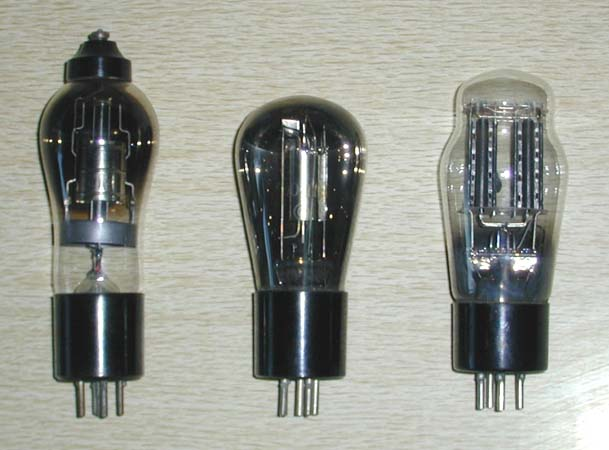


Antentop is FREE e-magazine devoted to Antennas and Amateur Radio an
Special page devoted to
Vacuum Tubes

Custom Search
|
ANTENTOP-
03- 2003, # 004 |
Vacuum Tubes |
||
|
|
|||
|
in the marking, which was usually a factory number of design, served for
division of the valves of the same category. According to this
system the valves models R-5, "Micro", MDS, PT-19, KT-2
were renominated as P-7, PT-2, ST-6, ST-19 and VT-14 (in Russian
transcription). In early 1930's
a series of economical glass valves |
of 2 and 4V direct heating appeared (UB-107, UB-110, SB-154 etc.). The receivers using such valves were
battery-supplied. From 1935 the so-called 4-V "super"-series of glass valves with indirect heating appeared ,
which was installed in the AC-supply direct-amplification radios
(E4S, EKL) and in the first Soviet superheterodynes (TsRL). In 1931 the first
home penthode SO-113 of this series was produced. |
||
|
|
|||
|
Left to right: VO-166,
SO-124, UB-110
|
|||
|
|
|
||
|
|
|
||
|
|
|
||
|
Page 93 |
|||
 |
 |
 |
 |
Just for Fun:

Powered byIP2Location.com
Thanks for your time!
Last Updated:
February 29, 2020 23:05





